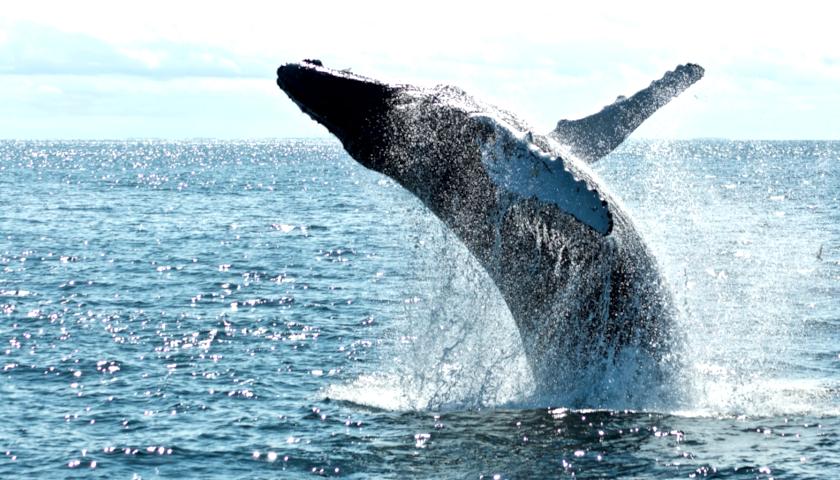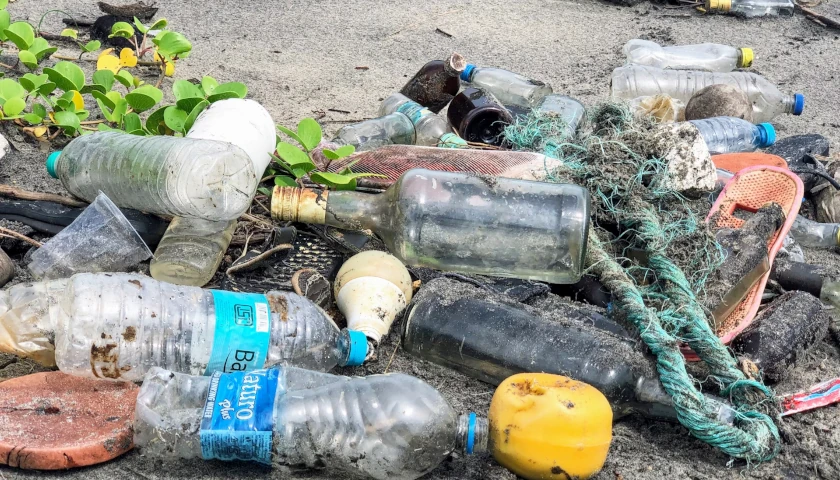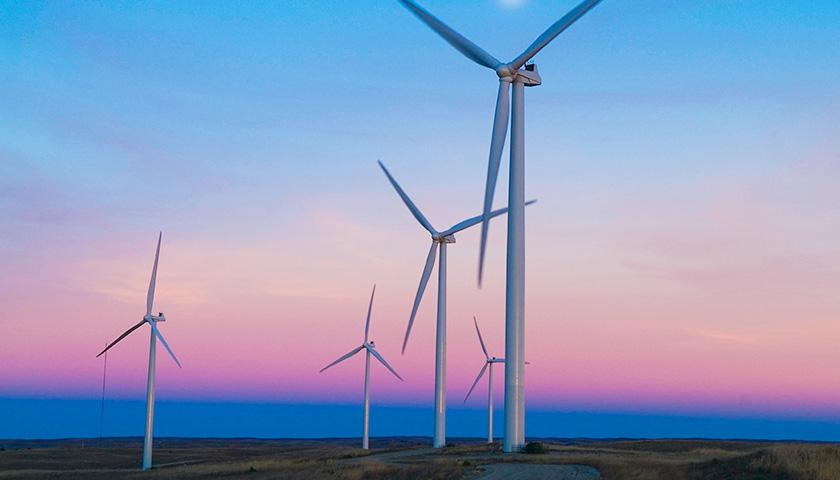by Kevin Killough
Saving the whales was once a leading cause of left-wing environmental groups like Greenpeace. But offshore wind development has created an ironic twist in which conservative groups are now the loudest voices raising concerns about the North Atlantic right whale’s extinction.
The Heartland Institute, Committee for a Constructive Tomorrow (CFACT) and the National Legal and Policy Center, want to draw attention to what they say is a connection between an increase in dead whales along the East Coast and industrialization of the U.S. Coast. A new study by an independent acoustician concludes that they may be right.
Off the shores of the East Coast are plans for the development of massive amounts of offshore wind farms. Among them is Dominion Energy’s Coastal Virginia Offshore Wind project, which is expected to be the largest offshore wind farm in the world.
Last month, a coalition of conservative groups filed a lawsuit against federal agencies, their top officials, and Dominion Energy, arguing the permits didn’t properly assess the danger the project presents to whales. The same groups Tuesday submitted a Freedom of Information Act request for Dominion’s species protection plan, which they said isn’t publicly available.
Greenpeace, whose first campaign in 1973 was aimed at stopping whaling, insists that concerns about the impacts to whales from extensive offshore wind developments spreading up the East and soon the West Coast are nothing more than “right-wing disinformation,” and media outlets like the Associated Press and The Guardian report these concerns as “unfounded” and “false.”
Both the Associated Press and the Guardian have received funding from anti-fossil fuel groups in support of their reporting on climate and the environment.
Dominion spokesperson Jeremy Slayton told public broadcaster WHRO that the coalition’s lawsuit has no merits. He said that the Bureau of Ocean Energy Management (BOEM) has done a thorough review of the potential impacts to marine wildlife and the environment from the company’s project.
“The overwhelming consensus of federal agencies and scientific organizations is that offshore wind does not adversely impact marine life,” Slayton told WHRO.
Dr. David Wojik, policy advisor for CFACT, told Just The News he couldn’t believe the company’s statement. “I use the word ‘absurd,’ but ‘preposterous’ is probably the right word,” Wojik said.
Dominion received from the National Oceanic and Atmospheric Administration the authorization to “harass”– in limited terms — 80,000 animals over the next five years. Under federal law, offshore wind developers have to get permits, called incidental harassment authorization, to conduct activities that might threaten marine animals.
There are two types of harassment under federal law — Level A and Level B. Level A has the “potential to injure a marine mammal or marine mammal stock in the wild” and Level B has the same potential but could cause injury. Activities that cause these impacts are illegal, without the authorizations.
“If you chase a whale or a dolphin with your boat, they’ll take your boat,” Wojick said.
New research
Robert Rand, founder of the acoustics consultancy company Rand Acoustics, is trying to draw attention to what his research is showing — there is a lack of adequate protections for the whales that migrate along this corridor where all these projects are going up.
He told Just The News he gets little in the way of response from federal agencies that are overseeing the permitting for these projects.
Last year, after increases in the number of whale deaths threatened to drive the North Atlantic right whale into extinction, Rand produced an independent investigation of underwater noise levels from sonar survey vessels, which map the ocean floor for the planning of the projects.
Rand’s study found that the incidental harassment authorizations don’t impose sufficient mitigation requirements to protect marine animals. He sent the findings off to the National Oceanic and Atmospheric Administration and the Bureau of Ocean Energy Management (BOEM). He said he never received any response.
His latest study surveyed the noise from pile driving, which is when developers drive a giant steel monopile into the seabed by pounding on it. He took sound measurements as the 5000-pound, 700-foot long pile-driving vessel Orion was driving monopiles into seabed off the coasts of Nantucket Island for the Vineyard Wind project.
Rand’s conclusions suggest federal agencies are underestimating the impact to whales from offshore wind development. “This investigation discovered a substantial underestimation of both impulsive and continuous noise levels by current regulatory standards, suggesting that the actual exposure to harmful noise levels from pile driving for marine mammals like the critically endangered North Atlantic right whale is substantially greater than NMFS [National Marine Fisheries Service] acknowledges in its existing protective measures,” Rand wrote in his report.
Wojick, who wasn’t involved in Rand’s research, said that the implication here is that the 80,000 estimation of “harassed” marine animals that Dominion is permitted for is likely a way too low.
Vessel collision
A humpback whale washed up dead Thursday on the shores of New Jersey’s Long Island Beach, Fox News reported. It was the first of 2024 in New Jersey, following 14 whale deaths in the state in 2023.
In a post on X, SaveLBI, a nonprofit coalition raising concerns about what they say are negative impacts of offshore wind development, reported a Dwarf Sperm found dead on April 4 on the beach of Sullivan’s Island in South Carolina. They estimate the tally of dead whales since December 2022 is approaching 100.
Bob Stern, president of SaveLBI, in a separate post on X, called for a moratorium on offshore wind development in order for more research into the impacts of the industry to be conducted.
“These continuing whale deaths unfortunately confirm our analysis of the significant expected impact on marine mammals from the noise from these projects, starting with the vessel surveys, through the pile driving of foundations and with the higher operational noise from these larger turbines,” Stern said.
Wojick said offshore wind proponents exploit the indirect way in which offshore wind development kills whales to say the two are unrelated.
In its environmental impact statement for a wind project off the shores of New Jersey, BOEM explained, “It is possible that pile driving could displace animals into areas with lower habitat quality or higher risk of vessel collision or fisheries interaction. Multiple construction activities within the same calendar year could potentially affect migration, foraging, calving, and individual fitness…. The potential for biologically significant effects is expected to increase with the number of pile-driving events to which an individual is exposed.”
Wojick said that the projects are built, for obvious reasons, outside shipping lanes, which also happen to be the whales’ migration corridors. So, the whales impacted by pile-driving and other construction noise are going to swim to the east, where they encounter a busy shipping lane called the M-95, or they go to the west, where they encounter coastal barge traffic. He said both are deadly.
Demonstrating that a whale died when it was struck by a vessel as a result of avoiding sonar vessels or pile-driving activity is very difficult, Wojick said. As an analogy, he uses the example of a dog getting hit by a car after running into traffic to escape a firecracker thrown at it. The car killed the dog, but it was the firecracker that ultimately led to the animal’s death, and nothing about the animal’s injuries would point to the firecracker.
According to data from NOAA Fisheries in 2015, 33 whales were found dead on the beaches between North Carolina and Maine. The following year, the number jumped to 54, and in 2017, 89 whales were found dead. The numbers then began to decline, falling to a record low of 24 in 2022. Then, in the first six months of 2023, 48 whales were found dead along the Atlantic Coast. There are an estimated 360 right whales remaining.
Lisa Linowes, co-founder of the Save Right Whales Coalition, told Just The News in October that 2016 was when sonar vessels began mapping out the lease areas off the East Coast in preparation for the buildout of wind farms.
The Biden administration has approved eight major offshore wind projects as part of President Joe Biden’s goal of producing 30 gigawatts of offshore wind capacity by 2030.
The conservative coalition’s lawsuit argues that the Biological Opinion issued by the National Marine Fisheries Service failed to adequately analyze the impacts of Dominion’s project on the endangered whales, and they are asking the court to set it aside and order a halt to work on the project.
With the media, the offshore wind industry and environmental groups denying any impacts to whales from offshore wind, it may be conservatives and independent researchers like Rand who end up saving the whales.
– – –
Kevin Killough is a reporter at Just the News.
Photo “Whale Breach” by Todd Cravens.





